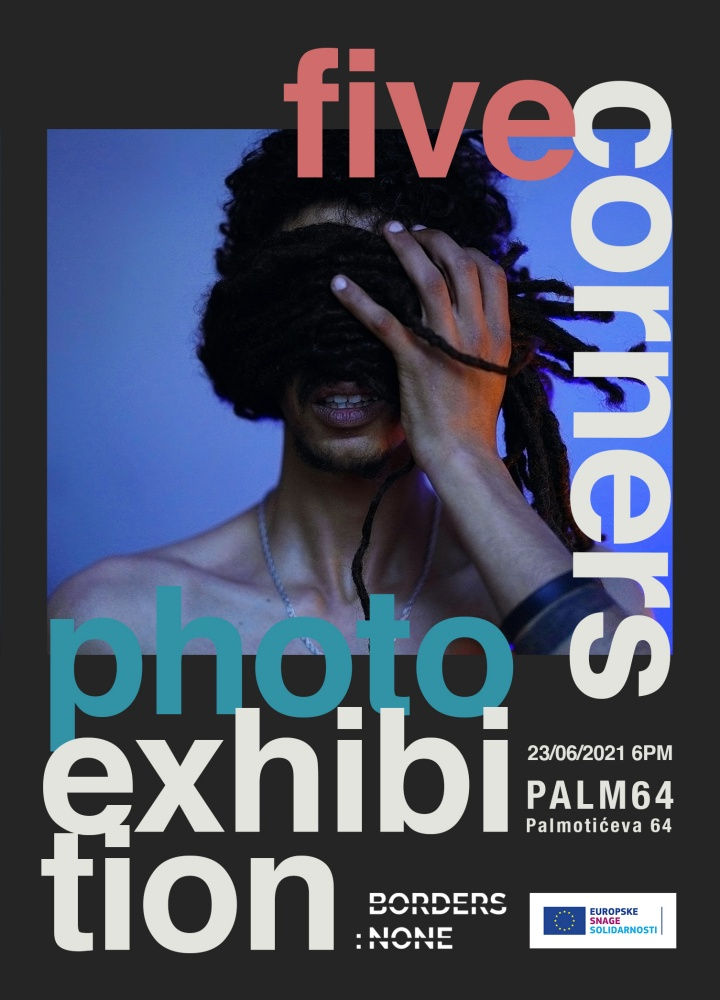Borders: None - A refugee photography course
- rasicmaja
- Oct 30, 2021
- 3 min read
Updated: Dec 6, 2021
In the ongoing refugee crisis, refugees are the subject being photographed, rather than letting them tell the story from their angle. They are objects of study, of surveillance - a spectacle.
Solidarity and supporting newcomers in their inclusion doesn't mean you have to wave your flags at the borders. Friendship and knowledge are the biggest gifts you can give to someone who was forced to flee their own home.
On the same side, all of us need to become less sensitive with this new shift in our society. To include them like friends do. Instead of giving them your old hand-me-downs, give them opportunity. Connect them with like-minded individuals, people of similar interests and passions. It's an old saying, Give a man a fish....
There are people who believe there are no boundaries in human potential. Let me introduce you to Borders: None and a Refugee Photography and Storytelling course we ran for several months as a part of the European Solidarity Corps project.

Teaching at the Faculty of Science
THE PROJECT AND INCLUSION THROUGH CREATIVITY
Borders: none is a humanitarian association that helps young refugees, asylum seekers and people under international protection with integration into society, especially the local community. They advocate their rights and equal chances, procure legal help, assist in career help and educate. Basically, they help young people with fewer opportunities to adapt faster and easier to new environment and hopefully, achieve their full potential on the job market.
They called me one day and offered me to teach a three-month photography course and to organise an exhibition. They gave me open hands when it came to curriculum and I was given one assistant. At the time I was implementing "Say yes to everything" philosophy, but then it dawned on me - I have to teach something I am self-taught myself. How do I do that?

Field work - Chandrelle and Fuji
WHAT AND HOW TO TEACH
The goal of the class was for students to express themselves through creativity and learn the basics of photography. But the goal for me was for them to stop identifying as refugees, and start identifying as something else - as photographers.
I was left with the age old question - who is a photographer? And how can I teach them to become one.
First, you have to be adventurous, always wondering.
I had to teach them to explore. I go by If you want to be a better photographer, stand in front of more interesting stuff. (J.R.) When we weren't at the classroom, we were roaming about what the city had to offer.
Field work
Second, you have to be bold and forthcoming.
I had to teach them not to be timid and to approach anyone they want.

Mohammed taking pictures of random passengers
Third, you have to know your shit.
I had to teach them everything there is about photography. The Faculty of Science in Zagreb was kind enough to give us one of their classrooms. There, we were discussing and looking at good, bad, underexposed, overexposed, blurry, sharp, colorful, black and white, analog, digital, different focal length, shutter speed or aperture examples.

Yoandris posing for Mounir
THE RESULT
The course was at its most intimate level, a space for refugees to come together, record and reflect on their own journey. Photography can be profoundly healing and empowering.

Mohammed and Mounir
In a second plane, it is about storytelling at a human level, creating connection and collective reflection within the workshop group. We talked a lot, everyone shared their vision on the topic at hand. They had to present their work (homework) at each class, so it also empowered them to stand and speak up.
At the third plane, it gave them knowledge and a new skill they can use for employment or just explore deeper for their own passion.

And in the final plane, participatory photography can have a powerful advocacy role - to challenge the dominant cultural narratives about refugees. To create a new imaginary about the reality of displaced people. An imaginary that can reach others: the general public, and policymakers.
With the exhibition of their work, we gave them the opportunity to share their work with a broader local public. They got the feeling of success and achievement. Local society, on the other hand, had a chance to see the work done by refugee youth which can raise sensibility toward this target group, promote qualitative youth work and show values of solidarity, multiculturalism and tolerance.
THE EXHIBITION - FIVE CORNERS
Opening event was held June 23rd at Studio Palm64. There we showcased a selection of the works of five students from five different countries. The featured artists are: Yoandris Acosta, Omar Algorie, Mohammed Alsalman, Mounir Esbai, Chandrelle Salamiat-Malonga
The exhibition





























شيخ روحاني
رقم شيخ روحاني
الشيخ الروحاني
الشيخ الروحاني
شيخ روحاني سعودي
رقم شيخ روحاني
شيخ روحاني مضمون
BERLINintim
جلب الحبيب
Your work using photography as a tool for storytelling and empowerment is inspiring! A Black screen backdrop could enhance the emotional depth of your project, highlighting the subjects and their powerful stories against a dramatic, focused background.
A well-crafted and informative read, thank you! Daniel Dantas
Excellent tips! I’ll be sure to use them! <a href="https://x.com/veronicad43944">Verônica Dantas</a>
This blog beautifully highlights the transformative power of a refugee photography course. It’s inspiring to see how creativity can provide refugees with a voice and a platform, offering them new opportunities to express their stories and experiences. Skills Shortage Australia